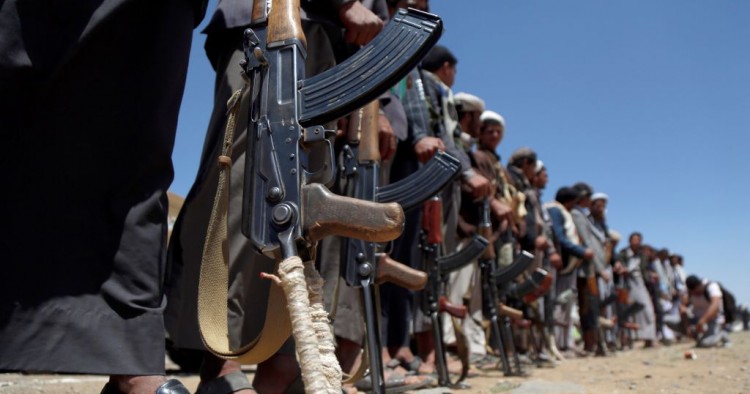Although the Houthi militia claimed the attacks on Saudi Aramco oil facilities in Saudi Arabia on September 14, experts doubt that the drones were launched from Yemen. Despite the Houthis’ affirmations and Iranian denials, investigations by the US and the Arab Coalition have demonstrated the weapons used were Iranian, and the location of the oil installations in northeastern Saudi Arabia makes them almost certainly out of range from Yemen.
Regardless of the origin of the attacks, it is clear that Iran was the mastermind of the operation. By claiming responsibility for the attacks, the Houthis have demonstrated that Iran is their priority – and that they are prepared to put Yemen at risk of retaliation for the greater goal of Iran’s regional project.
Iran has a clear motive. Tehran has repeatedly threatened to disrupt the flow of oil in the region with attacks in response to US sanctions, part of Washington’s “maximum economic pressure” campaign to counter Tehran’s malign role in the Middle East. President Hassan Rouhani explicitly threatened to affect “neighboring countries’” oil exports as sanctions squeeze Iranian exports: Iran’s export capacity has reportedly dropped from 2.7 million barrels per day (bpd) of crude oil to as little as 100,000 bpd in July.
Given what we know about the attacks, it is clear that the Houthis are covering up for Iran. Even in the likelihood that experts cannot confirm the origin of the attacks, it should be a given that the Houthis have claimed them on behalf of Iran’s Islamic Revolutionary Guard Corps (IRGC).
Continue reading on Al Arabiya
Photo by Mohammed Hamoud/Anadolu Agency via Getty Images
The Middle East Institute (MEI) is an independent, non-partisan, non-for-profit, educational organization. It does not engage in advocacy and its scholars’ opinions are their own. MEI welcomes financial donations, but retains sole editorial control over its work and its publications reflect only the authors’ views. For a listing of MEI donors, please click here.













